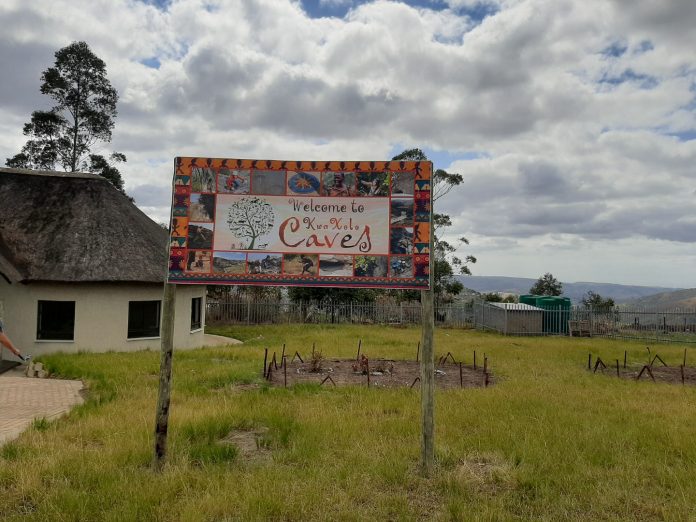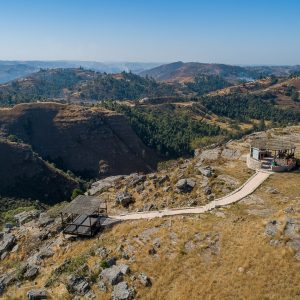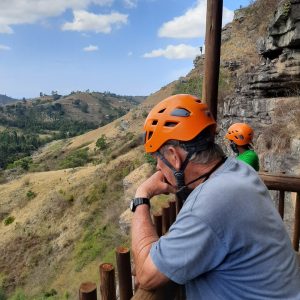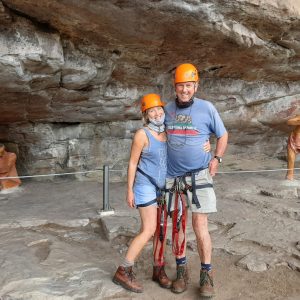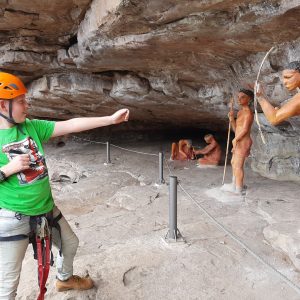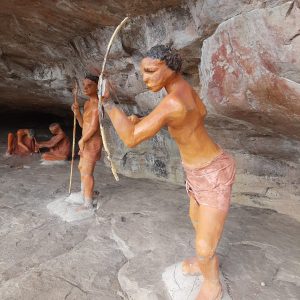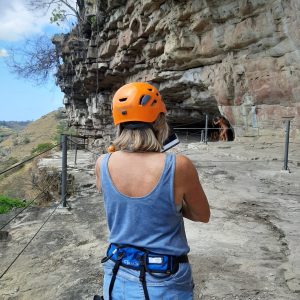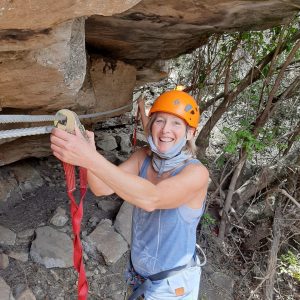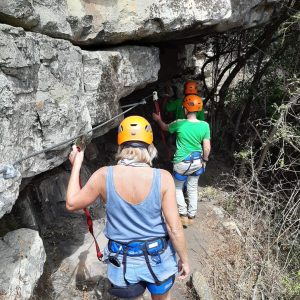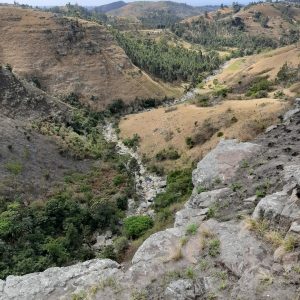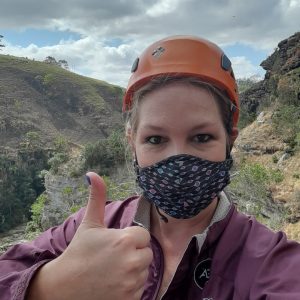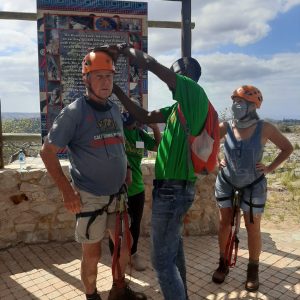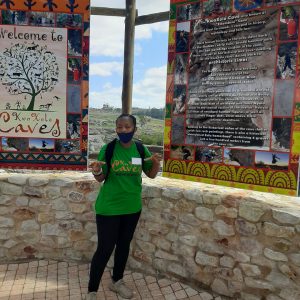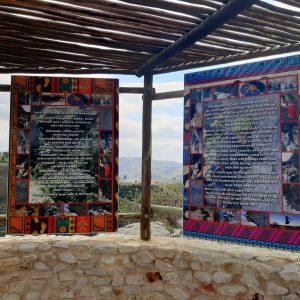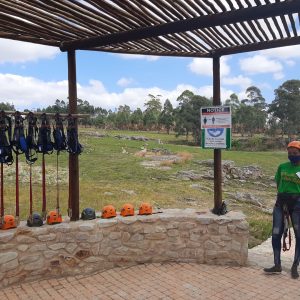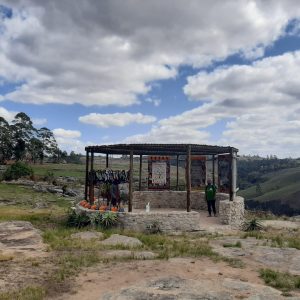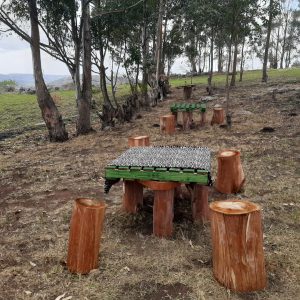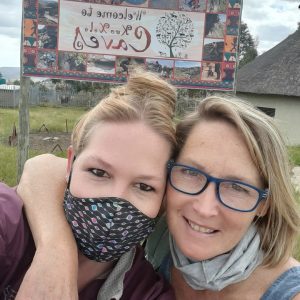It’s not every day you get to explore beautiful caves hidden away in a deep gorge that sits atop a mountainside on the South Coast with your whole family…
Dating back some 100 000 years, the KwaXolo Caves, located inland of Margate on the KZN South Coast, were once open-rock shelters for indigenous San communities, with the history of these people echoed in the rock paintings evident today. Set atop the precipice of a deep gorge boasting some of the region’s most magnificent views, these once-inaccessible caves are now a top tourist attraction following the launch of the KwaXolo Caves Adventures earlier this year.
When I was invited to be among the first to give this adventurous expedition a bash, of course I couldn’t say no. And since it was the weekend of my mom’s 60th birthday, I was even more thrilled when they offered to accommodate all of us. So, come Saturday morning, off the whole family (including my nephew who suffers from ADHD and who couldn’t wait to hunt for blue headed lizards while clambering down a mountainside, even with a fear of heights) went!

Originally launched in March this year, KwaXolo Caves Adventures is a fantastic fusion of cultural, natural and extreme sports tourism that gives visitors a unique experience of the KZN South Coast while empowering the surrounding communities. Although the lockdown initially put a halt to the tourist attraction, it is now operational for day visitors and without a doubt the ideal picnic or braai spot for those looking to enjoy a real change of scenery.
For Durbanites visiting the caves, it takes a bit more than two hours to get there, and I suggest a 4 x 4 if you have one. The road is car-friendly though, albeit a little daunting on smaller tyres.
On arrival, we were given quick rundown on how the caves are accessed – through the erection of a via ferrata system (used extensively in the European Alps), which is a climbing route using steel cables and rungs fixed to rocks. Visitors are kitted out in safety gear and securely hooked to the cables, allowing them to walk safely along the precarious mountain path. This system of harnesses and a 300-metre cableway was designed by the same engineers tasked with creating the famous Wild Swing at Oribi Gorge – another popular tourism attraction on the South Coast.
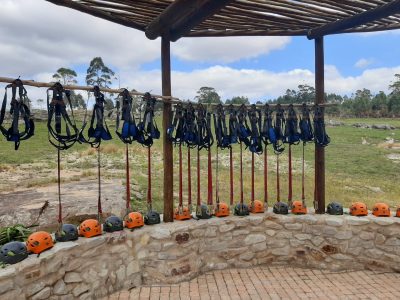
With their vast knowledge of the area and its plant and wildlife, our tour guides Nomvula Mabandi and Musa Ntaka strapped us all securely into our harnesses and helmets before we set off down the path. We were shown how to attach our two safety lines onto a fixed cable, with strict instructions that one line must always be clipped onto the cable as you move. Section to section, we then moved along as the hike extended towards the caves, with expansive views of the waterfall and endless gorge providing a captivating backdrop.

The hike is slightly more challenging for less experienced hikers when it comes to hiking down (and all the way back up) the rocky mountainside. Not surprising, the walk down is harder on the legs, but there are lookout points (with incredible views) on route where you can take a breather, hydrate and psych yourself up for the next stretch.
Feeling safe and chipper for the most part, we descended into the gorge with a little negotiation here and there and around a rocky outcrop. Then it was down a rock wall with the help of a few rungs, into the deep overhang itself.
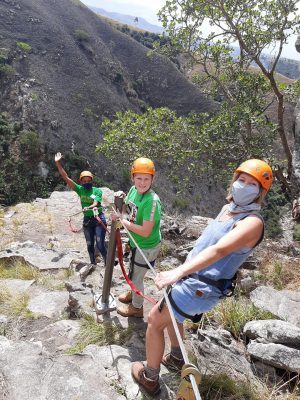
I was really impressed by the hike down, especially as I watched my over-enthusiastic nephew begin to concentrate and focus on overcoming his minor fear of heights and navigating the path with patience and respect. Our eyes were opened even more when we made it inside the caves and were taken on a journey back in time through sculptured San figures that depict the life of centuries ago and faded dabblings of ancient Shamans (medicine men) in ochre paint.
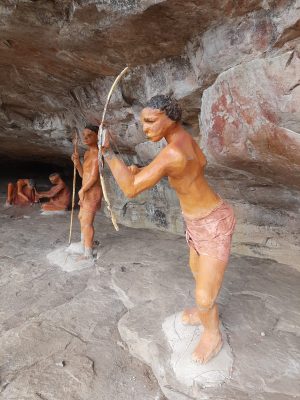
Similar to rock paintings found in mountainous regions throughout the province, the sites are believed to have had particular natural, cultural and spiritual significance to the San people. The paintings are said to represent journeys of shamans into the spiritual world in an effort to induce rain, heal sicknesses and ease societal tensions. The opportunity to view these, through an adrenalin-packed experience, made it every bit worth the drive.
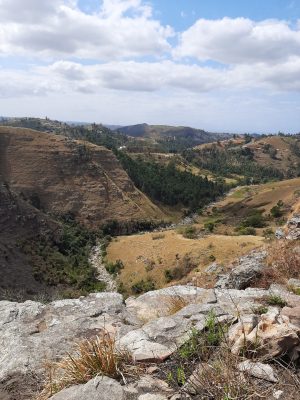
While overlooking the view from the last pit stop point, we were told that future plans were to extend the hike further down and possibly even put up a zipline. My close to 70-year-old father promptly announced, with a large grin, that he would definitely be back for that!
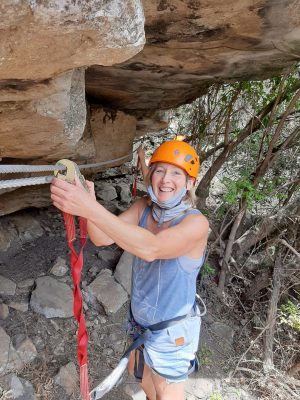
After exploring the cave, we clipped on again and began the hike back up. It took us about an hour and a half altogether to do the hike, and I totally enjoyed working up a sweat and the stiff legs I had for the next two days. My nephew, who still found the energy to chase after a rock lizard after we got to the top, was lights out right after dinner, so clearly it did him a whole lot of good, and my dad (and his two iron knees) who hiked with no complaints could hardly stay awake past dinner either. Of course my mom, the day before her 60 birthday, was about the only one, next to the tour guides, who came out looking younger than the rest of us.
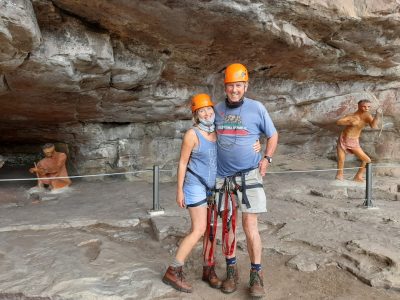
Open to hikers aged eight and older, a visit to KwaXolo Caves costs R150 a person and you can book through Makhosazane Mashal on 076 185 3447 or Shaun Makhaya on 074 8873 742. Details: Facebook: KwaXolo Caves Adventures.

